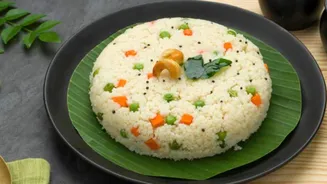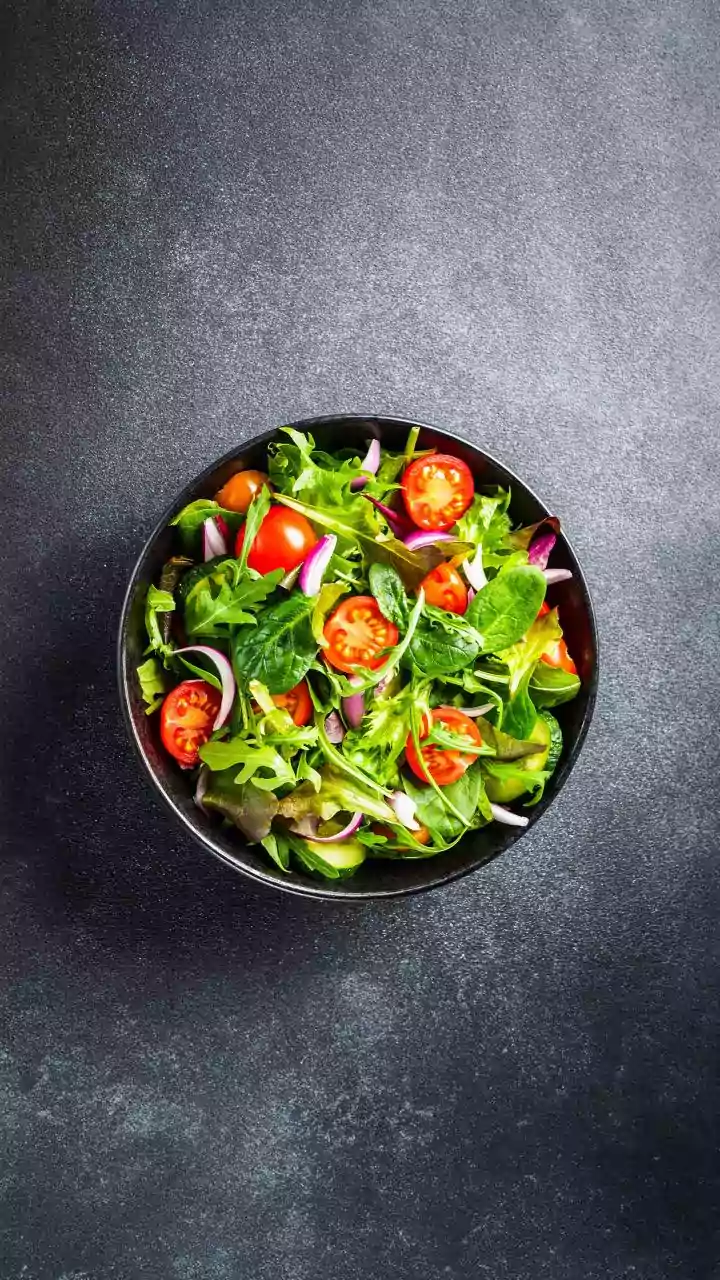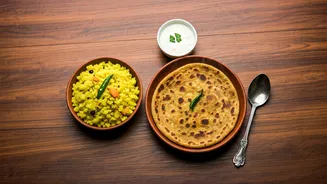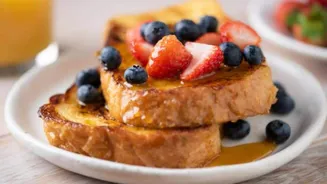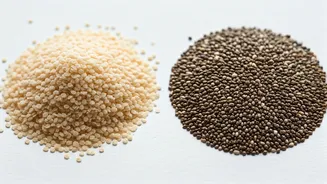Fiber's Morning Boost
Starting your day with a high-fiber breakfast is a fantastic way to boost overall health and well-being. Fiber, often overlooked, plays a crucial role
in digestive health, helping to regulate bowel movements and prevent constipation. It also contributes to sustained energy levels throughout the morning, preventing those energy crashes often associated with low-fiber meals. Furthermore, fiber can help with weight management by promoting a feeling of fullness, which can reduce overeating. Including fiber-rich foods in your breakfast can contribute to improved heart health, as it helps to lower cholesterol levels. Considering these benefits, incorporating high-fiber options into your Indian breakfast becomes a simple yet powerful step towards a healthier lifestyle. The recipes detailed later are designed to make this easy and enjoyable.
Idli with Sambar
Idli, a steamed savory cake, paired with Sambar, a lentil-based vegetable stew, is a classic South Indian breakfast that's packed with fiber. The idli, made from fermented rice and lentil batter, provides a good source of fiber, thanks to the lentils. This fermentation process also enhances the bioavailability of nutrients, making it easier for the body to absorb. Sambar, with its medley of vegetables like drumsticks, eggplant, and pumpkin, is another rich source of fiber. The variety of vegetables used in sambar not only increases the fiber content but also adds a wide range of vitamins and minerals essential for good health. This combination offers a balanced breakfast, providing fiber, protein, and essential nutrients, making it a perfect way to start your day. Consider adding a side of coconut chutney, a condiment that is also naturally high in fiber.
Upma: The Semolina Delight
Upma, a popular breakfast dish made from semolina (rava), is a surprisingly good source of fiber. While semolina itself contains fiber, the addition of vegetables like peas, carrots, and beans significantly boosts the fiber content of this dish. Cooking upma with these vegetables makes it more nutritious. The vegetables add not only fiber but also essential vitamins and minerals, increasing the overall nutritional value. Moreover, the cooking process of upma typically involves a small amount of oil, which can help in the absorption of fat-soluble vitamins present in the vegetables. Adding a sprinkle of roasted peanuts or cashews can further enrich the dish, enhancing its fiber content and adding a delicious crunch. This makes upma a quick, easy, and fiber-rich breakfast option that's suitable for busy mornings.
Poha: Flattened Rice Magic
Poha, a breakfast staple made from flattened rice, offers a good amount of fiber and is relatively easy to digest. Flattened rice itself provides a decent amount of fiber, contributing to digestive health. The addition of vegetables like onions, potatoes, and peas enhances its fiber content while adding flavor and texture. Poha is often seasoned with mustard seeds, curry leaves, and turmeric, all of which contribute to its nutritional profile. Mustard seeds provide trace minerals, curry leaves are rich in antioxidants, and turmeric is known for its anti-inflammatory properties. This makes poha not only a fiber-rich breakfast but also a powerhouse of essential nutrients. Preparing poha with a squeeze of lemon juice not only adds a zesty flavor but also helps with the absorption of iron.
Ragi Dosa's Goodness
Ragi dosa, made from finger millet (ragi) flour, is an excellent high-fiber breakfast option. Ragi is naturally rich in fiber, which aids digestion and promotes a feeling of fullness. This makes ragi dosa an ideal breakfast for those looking to manage their weight. Compared to traditional dosa made with rice, ragi dosa provides a significant boost in fiber content. Besides fiber, ragi also contains essential amino acids, calcium, and iron, making it a nutrient-dense choice. Pairing ragi dosa with sambar or chutney enhances the nutritional value. Both sambar and chutney typically contain fiber-rich vegetables and lentils, which complement the benefits of ragi. Making ragi dosa is also a great way to introduce variety into your diet, offering a delicious and healthy alternative to other breakfast options.
Oats Upma: A Fusion Twist
Combining the familiar comfort of upma with the high-fiber benefits of oats creates a unique and healthy breakfast: oats upma. This dish merges the goodness of both worlds, providing a fiber-rich meal that also offers a variety of nutrients. Oats are known for their high soluble fiber content, which can help lower cholesterol levels and improve heart health. By substituting a portion of the semolina with oats, you enhance the fiber content of the upma. Additionally, oats contain beta-glucan, a type of soluble fiber that promotes gut health and aids in digestion. The preparation method remains similar to traditional upma, making it a convenient and tasty option for those who enjoy the flavor of upma while seeking the added health benefits of oats. Oats upma is also an excellent base for adding vegetables like peas, carrots, and beans, further increasing the fiber intake.
Besan Chilla: Savory Pancakes
Besan chilla, or gram flour pancakes, are a versatile and fiber-rich breakfast choice. Besan, made from ground chickpeas, is naturally high in fiber and protein, making it a filling and nutritious option. Chillas are easy to prepare and can be customized with various vegetables and spices, increasing both flavor and nutritional value. The gram flour provides a good source of soluble fiber. This helps regulate blood sugar levels. Adding ingredients like onions, tomatoes, and coriander to the chilla batter further increases the fiber content and adds a burst of flavor. Besan chilla is an excellent breakfast option for those with gluten sensitivities or those looking for a lighter, yet equally satisfying, meal. Serve with a side of chutney or yogurt for a complete and balanced breakfast.







